Last-Minute NYC Holiday Gift Guide 🎁
We’ve created a holiday gift guide with presents for the intrepid New Yorker that should arrive just in time—


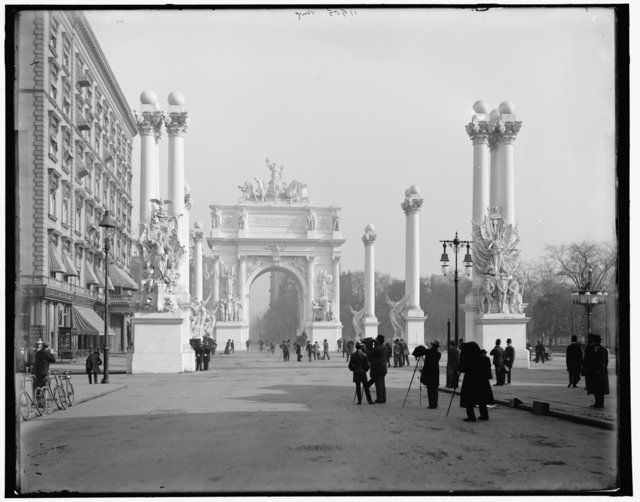
Image via Library of Congress
New York City has historically looked to Europe for architectural inspiration, particularly in the Beaux-Arts and City Beautiful eras. The penchant for monumental arches has its roots in the great works of France, Italy, Greece, England and other countries. The arches in New York City form the gateways to numerous well-known landmarks in the city, but first we thought we would begin with the arches that are now lost.

Image via Library of Congress
This mysterious Madison Square Park arch was the “Victory Arch”, a temporary monument of wood and plaster built at 24th Street and Fifth Avenue in 1918. The arch was conceived by mayor John F. Hylan to commemorate the New Yorkers who died in World War I.
The arch was designed by Thomas Hastings and was modeled after the Arch of Constantine in Rome using temporary materials. Relief panels commemorating such things as important battles and war service organizations covered the $80,000 triple arch before it was eventually razed. According to the article, there were plans to rebuild the Victory Arch in a form but arguments over the arch’s symbolism as well as who would get the commission for the arch halted any plans for completion Fiorello H. LaGuardia also publicly denounced the project as an “Altar of Extravagance.”

Image via Library of Congress
Curiously, Madison Square had also been the location of another temporary arch in 1899 called the Dewey Arch, which was built by Charles R. Lamb to commemorate Commodore George Dewey’s victory over the Spanish at Manila Bay in 1898. The Dewey Arch was built of staff, the same material used for the temporary buildings at the World’s Fairs, and modeled after the Arch of Titus in Rome.
Earlier in 1899, two additional arches were constructed to commemorate the centennial celebration of George Washington’s first inauguration, located on 23rd Street and 26th Street:
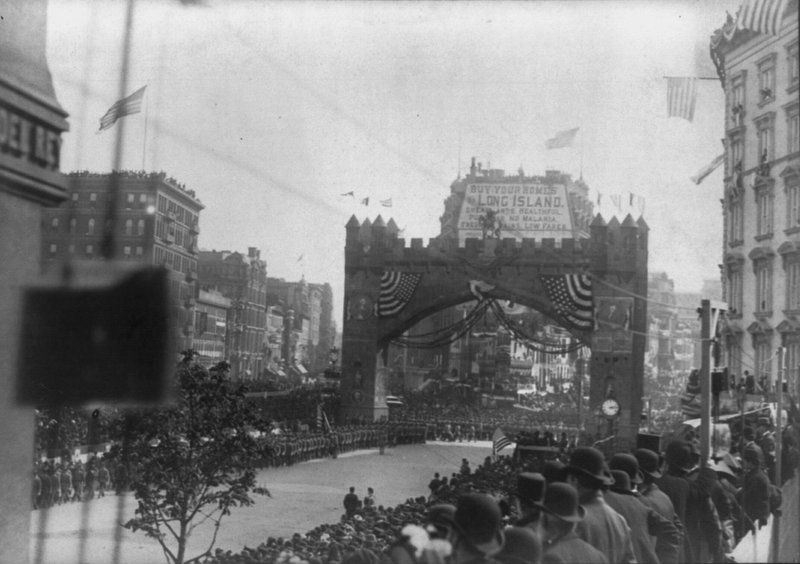
Photo from Library of Congress

Designed by Stanford White, the Washington Square Park arch was first built out of wood to commemorate the 100th anniversary of George Washington’s inauguration. The prominent citizens loved the Arc de Triomphe inspired arch and paid for White to design it out of marble. Alexander Stirling Calder made the statue of Washington and Fredrick MacMonnies carved the relief work.
In 1916, painter John Sloan, dadaist Marcel Duchamp and three of their friends broke into the interior staircase of the arch. They climbed to the top, cooked food, lit Japanese lanterns, fired cap pistols, launched balloons and declared it the independent republic of New Bohemia. The citizens were outraged and the interior door of the arch was sealed. Some of the lucky have been able to tour the inside. Today the arch is partially encased by netting to protect it from the corrosiveness of guano droppings (aka pigeon poop). The Untapped Team got to climb to the top of the arch with NYC Parks Comissioner Mitchell Silver! Check out photos from our climb here.
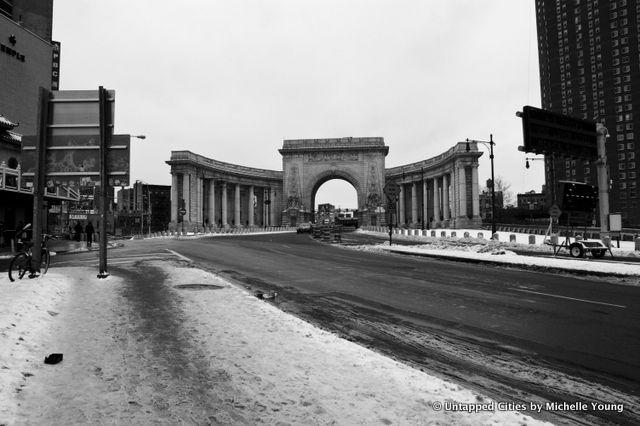
The entryway to the Manhattan Bridge was inspired by the triumphal Porte Saint Denis in Paris and is a NYC landmark by the firm Carrère and Hastings, who also designed the New York Public Library. The accompanying colonnade and arch were completed in 1915. The Porte Saint Denis was in turn inspired by the Arch of Titus in Rome.
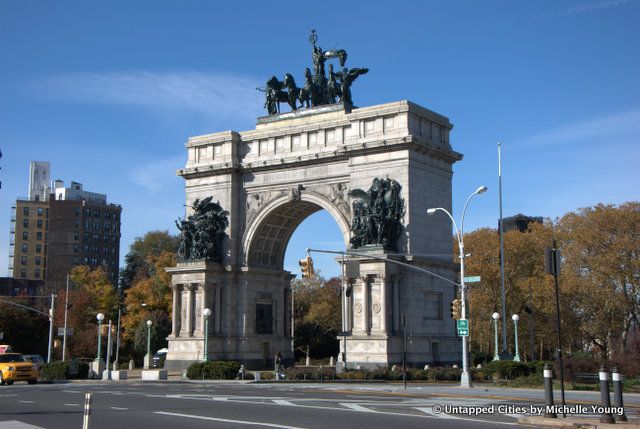
Eastern Parkway was designed to be revolutionary, an American Champs-Élysées. By 1866, Eastern Parkway was in the works as the world’s first parkway, meant to mirror the far-stretching, spacious boulevards of Western European cities by urban planners like Georges-Eugène Haussmann of Paris. Olmstead originally designed Grand Army as a humble square meant to physically separate the park from the chaotic city outside its gates. Now, the grand entrance pays homage to American deities like Abraham Lincoln and John F. Kennedy in the statue. The site figures largely in the Netflix show Grand Army.
The 1892 addition of the Soldiers’ and Sailors’ Arch, celebrating the Union victory in the Civil War, adds to the Parisian feel. Designed by John H. Duncan, who also planned Grant’s Tomb, it mirrors the Arc de Triomphe.
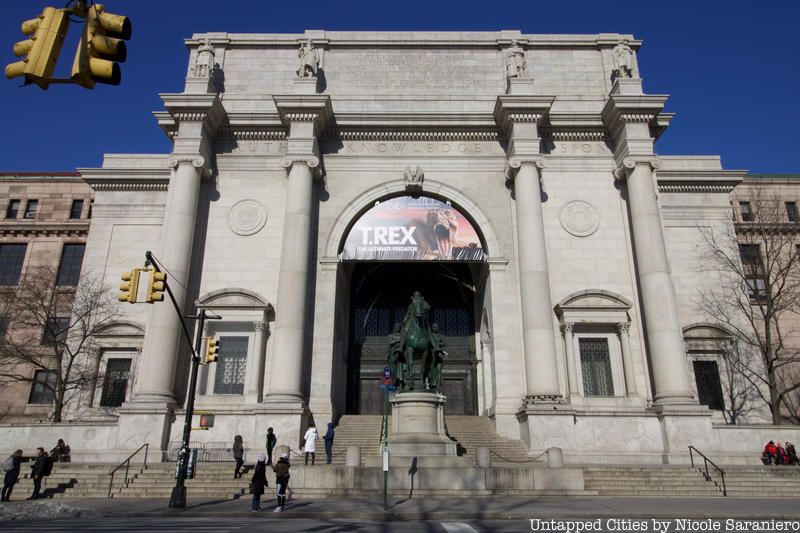
The Central Park West entrance to the American Museum of Natural History was modeled after the Arch of Constantine and is known as the Theodore Roosevelt Memorial. Designed by John Russell Pope, the Beaux-Arts style entrance is described by AMNH as including a “triumphal arch” with four notable explorers in sculpure at the top: Daniel Boone, John James Audubon, William Clark and Merriweather Lewis.
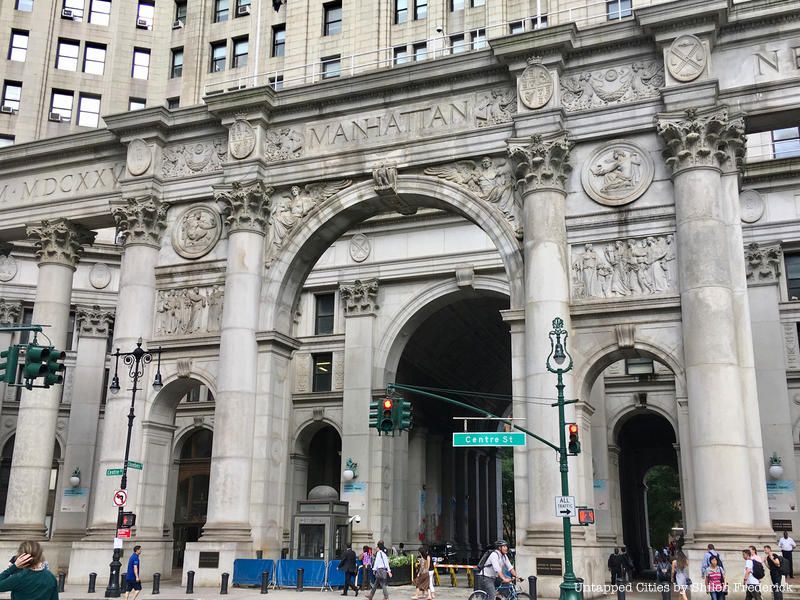
The Arch of Constantine also served as the model for the facade of the Municipal Building. The building’s terra-cotta vault was inspired by the Palazzo Farnes and its columned entrance was possibly modeled on Bernini’s Colonnade, at St. Peter’s
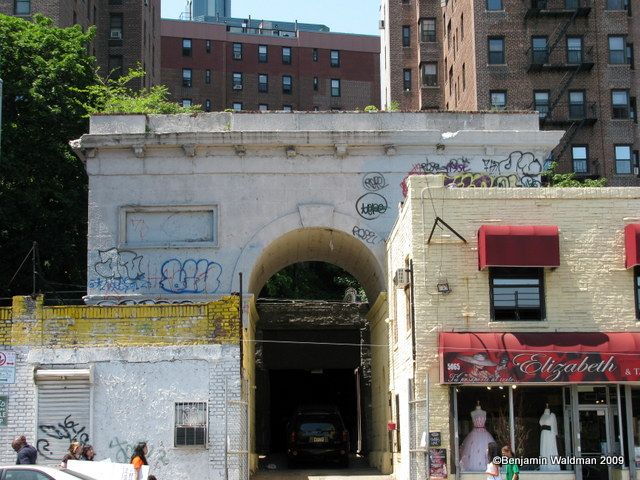
Mostly forgotten and graffiti-riden, the 35-foot high marble Seward-Drake arch is now partially obscured behind buildings in Inwood. The arch is a remnant of a once wealthy family, whose marble estate was once entered via this monumental arch. According to The New York Times, the Drake family built their estate in 1855 on a hilltop north of the Dyckman family, using marble quarried from a location at the foot of the hill along Broadway. A low marble wall extended from the arch, which was said to be an exact replica of the Arc de Triomphe in Paris.

The house was sold to Thomas Dwyer, a contractor who built the Solder and Sailor’s Monument and part of the Metropolitan Museum of Art, who used the arch as his workshop. As the IRT subway made its way, the land was subdivided and at some point, a car dealership used the arch as its entrance. This signaled the end of the once grand Drake mansion, which was demolished in 1938 for the Park Terrace Gardens. The arch caught fire in 1970, leaving the roof open.
Written collectively by The Downtown Doodler, Benjamin Waldman, Douglas Capraro and Michelle Young
Next, check out We Climbed to the Top of the Washington Square Park Arch! and Brooklyn Grand Army Plaza’s History as a Site of Protest and Honor
Subscribe to our newsletter